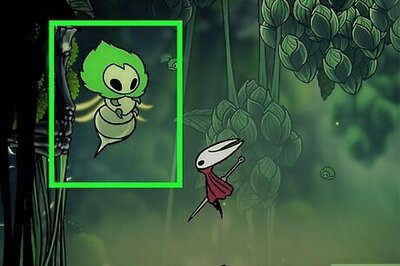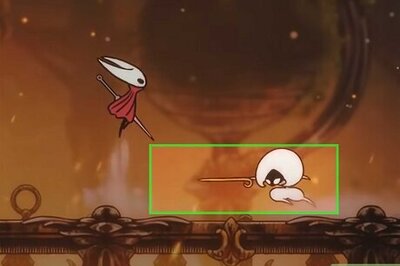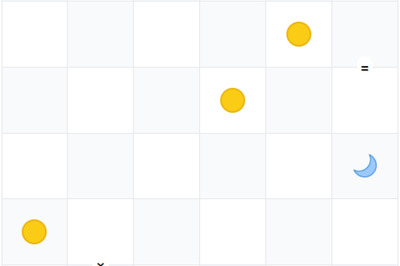
views
CHENNAI: What is it about the glorious past that makes us want to hold on to a piece of it? If that piece is made out of pure gold and studded with diamonds, rubies and emeralds, it would be surprising if you didn’t want to keep it. To own and wear a piece of antique jewellery is a matter of pride. While there are many jewellery pieces created to look old and antique, it doesn’t quite capture the essence of the original, which could be well over 100 years old. Often, such pieces are passed on from one generation to another and some of them are so intricately designed, that it is impossible to replicate them.Meenu Subbiah knows it all too well. The owner of Meenu Subbiah Diamonds wears a two-rowed gold thali, which has an impression of goddess Mahalakshmi engraved in the centre.“This 80-year-old thali, weighing 60 sovereigns (480gm), is called kazhuthu ooru of Nattakottai Chettiyars,” she explains.“It has been a part of family possession for many generations.My grandmother wore it on her wedding day. It was then given to my mother who later gave it to me. It’s a very valuable possession and such designs are rare to find and almost impossible to replicate.” She also treasures a 70-plus-year old thalachuti, made of gold, given by her mother-in law.Encrusted with ruby and uncut diamonds, Meenu has converted the thalachuti into a pendant, strung on to a gold chain.Though some retain such pieces for sentimental value, for a few, like Revathy Krishna, antique jewellery speaks volumes about the style and sophistication of the wearer. As is the case with anything antique, her collection has been in the family for many generations.“For instance, I have a floral pattern gold necklace, which is around 6 to 7 sovereigns (around 48 to 56gm) that is more than 70 years old. My grandmother gave it to me and told me that it was given to her by her mother,” explains Revathy and adds that the stones used in the olden days were pure in quality and cut. “If you notice the colour of the rubies, it is pink, unlike the dark maroon rubies that you see in today’s jewellery. Even after several years, most of my antique pieces still look new and can be worn for any occasion. Those days, the artisans were able to carve designs even in a small block of gold. They were extraordinary and the gold too never fades.” Latha Krishnan concurs.She’s a proud owner of a ruby-studded bangle, silver jug and treasure box that are more than 80 years old.According to her, the bangle is one-of-a-kind design and can never be replicated, “because such rubies are not available anymore”.As more people discover the timeless beauty and remarkable craftsmanship of each period, Sneha Nair, a socialite, exhibits her 100-year-old Mughalinspired neck piece and a pair of earrings. Embedded with original rudraksh from Kailash, the neck piece has uncut diamonds and rubies. “It’s one of the best handcrafted designs in my closet. It was given to me by my mother in law,” she says. “Also the Kada, an 80-year-old treasure, is made of single solid gold, with intricate filigree designs carved on it, and was given to me by my great grandmother. You’ll never find jewellery like this anywhere.” Even if they were, let’s face it — how many of us can afford it? And this is where jewellery houses play an important role. Big names like Prince Jewellery and GRT are famous for their antique-looking jewellery pieces, which often find many takers in Chennai. According to Sudhakar, counter in charge of the antique section, Prince Jewellery, “A 150-yearold ruby-studded necklace costs `6 lakh and is heavy to wear. But the same design in an antique-looking piece, would be light-weight and would cost just a lakh.Mostly, people prefer the latter because of its cost,” he explains.Apparently, the antiques cannot be replicated because most of them are 100 per cent handmade and the workmanship of goldsmith in those days is not available anymore. “Today’s designs are mostly machine-cut. Most of the modern-day jewellery in gold or silver, go through a process of oxidising and are sometimes buried in a pot of clay, to give them a dull look and are sold as antique jewellery in the market,” he adds.Unlike yellow gold, antique needs no polish to keep the gold shining, and also selling an antique piece depends on its age.As the trend is booming in Chennai, a lot of young women want to adorn antique pieces for marriages and festival occasion, he says. “Most of the antiques that were available in those times had precious stones embedded with gold. This finish attracts a lot of young people as it stands out completely different from the bright yellow gold,” he explains.




















Comments
0 comment